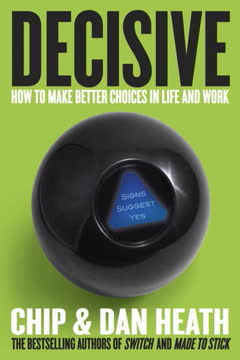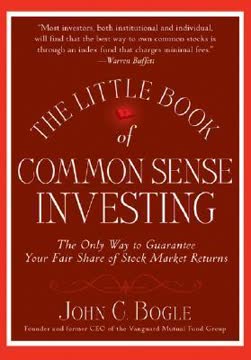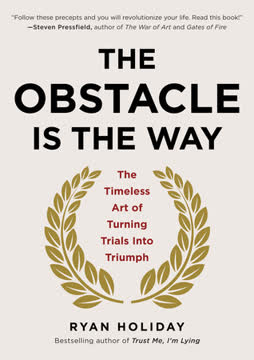Key Takeaways
1. Learn Electronics by Doing: Experiment and Break Things.
Burn things out, mess things up—that’s how you learn.
Hands-on approach. The most effective way to learn electronics is through direct experimentation. Instead of starting with abstract theory, dive in and build circuits to see how components behave. This practical experience makes concepts tangible and memorable.
Embrace mistakes. Don't fear failure; learn from it. Burning out a component or wiring something incorrectly provides valuable insights into the limits and characteristics of parts. The low voltages used in basic experiments are safe for you, even if they damage sensitive components.
Affordable start. Getting into hobby electronics is inexpensive. You don't need a dedicated workshop; a tabletop is sufficient. Basic tools and components are readily available and affordable, making hands-on learning accessible to everyone.
2. Grasp the Core Concepts: Voltage, Current, and Resistance.
volts = amps × ohms
Fundamental relationship. Electricity involves pressure (Voltage, V, measured in Volts), flow (Current, I, measured in Amps), and opposition to flow (Resistance, R, measured in Ohms). Ohm's Law (V = I × R) describes the fundamental relationship between these three properties in a circuit.
Pressure and flow. Think of voltage like water pressure and current like water flow rate. A higher voltage pushes more current through a given resistance. A higher resistance restricts current flow, even with high voltage.
Measuring electricity. A multimeter is essential for seeing the invisible world of electricity. It measures voltage between two points, current flowing through a circuit, and the resistance of components or pathways.
3. Understand Passive Components: Resistors, Capacitors, and Coils.
A capacitor blocks DC (direct current).
Passive roles. Resistors, capacitors, and coils (inductors) are passive components; they don't generate power but affect its flow. Resistors limit current and drop voltage according to Ohm's Law.
Storing energy. Capacitors store electrical charge, like tiny rechargeable batteries. They block steady DC but allow fluctuating AC to pass through, especially higher frequencies. Coils store energy in a magnetic field when current flows and release it as a voltage pulse when current stops, opposing changes in current flow.
Frequency response. The interaction of resistors, capacitors, and coils with alternating current (AC) is crucial.
- Resistors affect AC and DC equally.
- Capacitors pass high-frequency AC more easily than low-frequency AC.
- Coils pass low-frequency AC more easily than high-frequency AC.
This frequency-dependent behavior is key to filtering signals.
4. Control Electricity with Switches, Relays, and Transistors.
A bipolar transistor amplifies current, not voltage.
Switching states. Switches manually open or close circuits. Relays are electrically operated switches, using a coil to move contacts. They allow a low-power signal to control a higher-power circuit.
Solid-state control. Transistors are semiconductor devices that act as solid-state switches or amplifiers. A small current or voltage applied to one terminal (the base) controls a larger current flow between the other two (collector and emitter).
Types and uses. Bipolar transistors (NPN and PNP) amplify current. Relays offer isolation and multiple switching options (single-throw, double-throw, single-pole, double-pole). Both are fundamental for controlling the flow of electricity in circuits.
5. Unlock Complexity with Integrated Circuit Chips.
The 555 timer is probably the most versatile chip that exists, with endless applications.
Miniaturized circuits. Integrated circuits (ICs or chips) contain dozens to billions of transistors and other components etched onto a single silicon wafer. They perform complex functions in a tiny package.
Families of chips. Chips are often grouped into families (like the 74xx logic family or the 4000 CMOS family) based on their technology and function. Understanding chip part numbers helps identify their capabilities and compatibility.
Beyond individual components. While circuits built with individual components teach fundamentals, chips offer shortcuts for complex tasks like counting, timing, and performing logical operations, enabling more sophisticated projects.
6. Master the Versatile 555 Timer for Timing and Oscillation.
In astable mode, the timer delivers a continuing series of pulses.
Multipurpose chip. The 555 timer is an incredibly popular and versatile chip used for generating time delays, pulses, and oscillations. It can operate in three main modes: monostable, astable, and bistable (flip-flop).
Timing with RC networks. In monostable mode, a 555 timer produces a single pulse of a duration determined by an external resistor-capacitor (RC) network. In astable mode, it continuously generates pulses, with the frequency and duty cycle controlled by external resistors and a capacitor.
Beyond timing. The 555 can also function as a simple flip-flop (bistable mode), changing its output state with one input pulse and remaining in that state until another pulse is received. Its relatively high output current makes it useful for driving components directly.
7. Build Digital Logic with AND, OR, and NAND Gates.
The NAND gate is the most fundamental building block of digital computers...
Boolean operations. Logic gates perform fundamental operations based on Boolean logic (true/false, high/low). Common gates include AND, OR, NAND, NOR, XOR, and NOT (inverter).
Truth tables. Each gate has a specific behavior defined by its truth table, which shows the output for every combination of inputs. For example, an AND gate outputs high only if all inputs are high. A NAND gate outputs low only if all inputs are high.
Building blocks. Logic gates are the foundation of digital circuits and computers. By combining gates, you can create complex systems that perform calculations, make decisions, and control sequences of events. Understanding their basic function is key to digital electronics.
8. Bring Projects to Life with Microcontrollers like Arduino.
An Arduino is a circuit board into which is plugged an Atmel microcontroller.
Computer on a chip. A microcontroller is a single chip containing a processor, memory, and input/output capabilities. It's a tiny computer that can be programmed to perform specific tasks.
Hardware platform. Arduino is a popular open-source platform that makes microcontrollers accessible. The Arduino board provides the necessary support circuitry (power regulation, USB interface) to easily program and interface with the microcontroller chip.
Software control. Microcontrollers are programmed using an Integrated Development Environment (IDE) on a computer. You write code (often in a C-like language), compile it, and upload it to the chip's memory, allowing hardware behavior to be controlled by software instructions.
9. Connect Electronics to the Real World with Sensors and Analog Inputs.
A thermistor... varies its electrical resistance over a wide range, depending on its temperature.
Bridging the gap. The physical world often provides inputs that aren't simple on/off signals. Sensors like thermistors (temperature-dependent resistors) provide variable resistance or voltage outputs.
Analog-to-digital conversion. Microcontrollers with analog input pins can read these variable voltages. An internal Analog-to-Digital Converter (ADC) translates the voltage level into a digital number that the microcontroller's program can process.
Processing real-world data. By reading analog inputs, a microcontroller can monitor environmental conditions (temperature, light, pressure) and use that data to make decisions and control outputs, enabling interaction with the real world.
10. Build and Refine Circuits: Breadboarding, Soldering, and Troubleshooting.
Usually there is only one way to build a circuit that works, while there are hundreds of ways to make mistakes that will prevent it from working.
Prototyping. Breadboards allow quick, solderless assembly and testing of circuits. They are invaluable for experimenting and verifying designs before making permanent connections.
Permanent connections. Soldering creates durable electrical joints. It's essential for building projects that will last. Using the right iron, solder, and technique is crucial for reliable joints. Heat sinks protect sensitive components during soldering.
Finding errors. Troubleshooting is a methodical process. Check voltages, component placement and orientation, connections, and component values. A multimeter and magnifying glass are indispensable tools for identifying faults.
11. Explore Applications: From Alarms to Audio and Randomness.
Electronic circuits to simulate the throw of one or two dice have been around for decades.
Practical projects. Applying fundamental concepts allows you to build functional devices. Examples include:
- Intrusion alarms using sensors, logic, and relays.
- Audio circuits using amplifiers, filters (coils and capacitors), and oscillators.
- Games like reflex testers or electronic dice using timers and logic chips.
Combining concepts. Complex projects often combine multiple principles and components learned in simpler experiments. Building these applications reinforces understanding and demonstrates the power of electronics.
Customization. Once a basic project works, you can customize it by changing component values, adding features, or modifying the design. This allows for personalization and further learning.
Last updated:
Review Summary
Make receives mostly positive reviews, praised for its clear explanations and practical approach to electronics. Readers appreciate the logical progression, illustrations, and hands-on experiments. Many find it an excellent introduction for beginners, filling knowledge gaps and encouraging self-learning. Some critics note outdated information and occasional lack of depth. Overall, reviewers recommend it for those new to electronics, highlighting its ability to make complex concepts accessible and enjoyable. The book's approach of learning through discovery is particularly commended.
Similar Books










Download PDF
Download EPUB
.epub digital book format is ideal for reading ebooks on phones, tablets, and e-readers.





